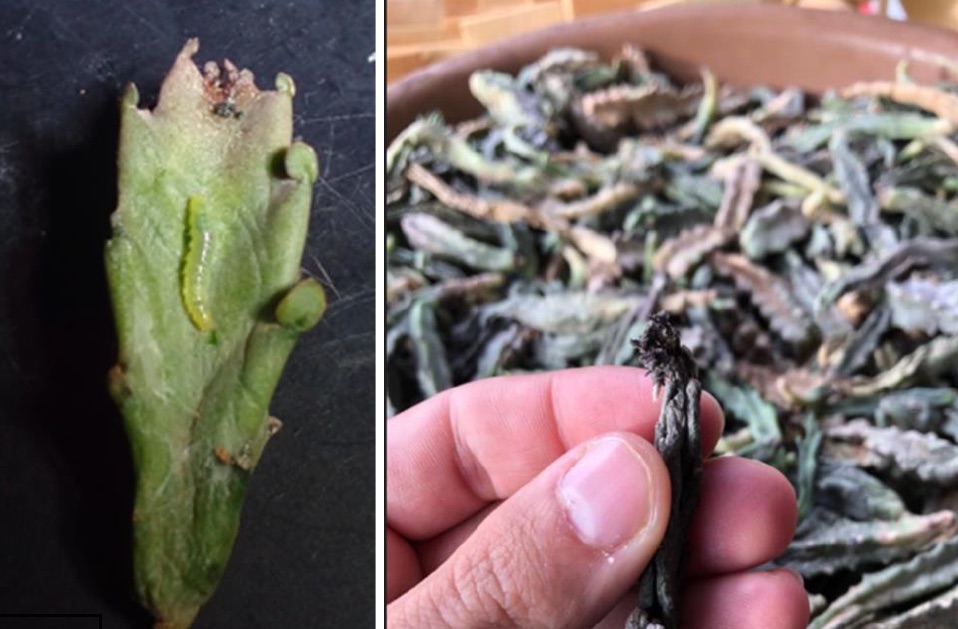Two new localities for Apteranthes munbyana (Decne. ex Munby) Crespo & Mateo (Apocynaceae) in the mountains of eastern Morocco
DOI:
https://doi.org/10.24310/abm.49.2024.19439Keywords:
Aptherantes, chorology, moroccan flora, new locations, rare speciesAbstract
Apteranthes munbyana (Decne. ex Munby) Crespo & Mateo an endemic species of Morocco, Algeria and Spain. This Apocynaceae is reported for the first time in three localities in northeastern Morocco. Previously, its occurrence was restricted to Jbel Hamra in the south of Oujda, approximately 40 km from Nador towards Guercif, and in the Boccoyas along the Moroccan Mediterranean coast. In Morocco, it is recognized as a very rare and endangered species. The following note provides the details on the precise geographical locations of the two newly discovered localities, along with an exploration of the taxonomy of A. munbyana.
Downloads
Metrics
References
Albers, F. & Meve, U. (Eds.) (2004). Illustrated Handbook of Succulent Plants: Asclepiadaceae. Heidelberg: Springer.
Bensusan, K. (2009). Taxonomy and conservation status of Moroccan stapeliads (Apocynaceae-Asclepiadoideae-Ceropegieae-Stapeliinae). Bulletin de l'Institut Scientifique, Rabat, Section Sciences de la Vie, 31(2), 67-77.
Bruyns, P.V., Al Farsi, A. & Hedderson, T. (2010). Phylogenetic relationships of Caralluma R. Br. (Apocynaceae), inferred from plastid and nuclear sequence data. Molecular Phylogenetics and Evolution, 59(4), 1031-1043.
doi: 10.1016/j.ympev.2011.04.003.
Crespo Villalba, M.B. (2006). Nomenclatural changes in Apteranthes Mikan (Asclepiadoideae, Apocynaceae). Flora Montiberica, 32, 15-20.
De Kock, D. & Meve, U. (2007). A checklist of Brachystelma, Ceropegia, and the genera of the Stapeliads. International Asclepiad Society, UK, 125 pp.
Fennane, M. (2021). Livre rouge de la flore vasculaire du Maroc. Rabat: Travaux de l'Institut Scientifique, série Botanique, numéro spécial Premier Centenaire de l'Institut Scientifique.
Fennane, M. & Ibn Tattou, M. (1998). Catalogue des plantes vasculaires rares, menacées ou endémiques du Maroc. Bocconea, 8. doi: 10.7320/Bocc8.007.
Fennane, M. & Ibn Tattou, M. (2005). Flore vasculaire du Maroc: inventaire et chorologie, Vol. 1. Rabat : Travaux de l'Institut Scientifique, série Botanique, 37.
Fennane, M., Ibn Tattou, M., Ouyahya, A. & El Oualidi, J. (Eds.) (2007). Flore Pratique du Maroc, Vol. 2. Rabat : Travaux de l'Institut Scientifique, série Botanique, 38.
Fuentes, J., Ortega, M., Cueto, M. & Blanca, G. (2024). Tres nuevas aportaciones para la flora vascular de Andalucía (sur de España). Acta Botanica Malacitana, 49. doi: 10.24310/abm.49.2024.18914.
Jahandiez, E. & Maire, R. (1934). Catalogue des plantes du Maroc, Tome 3. Alger: Imprimerie Minerva.
Meve, U. & Liede, S. (2004). Subtribal division of Ceropegieae (Apocynaceae – Asclepiadoideae). Taxon, 53(1), 61-72. doi: 10.2307/4135497.
Raynaud, C. (1986). Asclepiadaceae. In Fennane, M. & Mathez, J. (Eds.), Eléments pour la flore pratique du Maroc (pp. 27-34). Naturalia Monspeliensia, série Botanique, Fasc. 50.
Sauvage, Ch. & Vindt, J. (1952). Flore du Maroc, analytique, descriptive et illustrée. Spermaphytes, Fasc. 1. Rabat : Travaux de l'Institut Scientifique Chérifien, 4.
Valdés, B. (2013). Checklist of the vascular plants collected during the fifth “Iter Mediterraneum” in Morocco. Bocconea, 26, 13-132. doi: 10.7320/Bocc26.013.

Downloads
Published
How to Cite
Issue
Section
License
Copyright (c) 2024 Acta Botanica Malacitana

This work is licensed under a Creative Commons Attribution-NonCommercial-ShareAlike 4.0 International License.
All information related to the licensing of published works in Acta Botanica Malacitana and copyright can be found in our Editorial Policy.






1.png)
